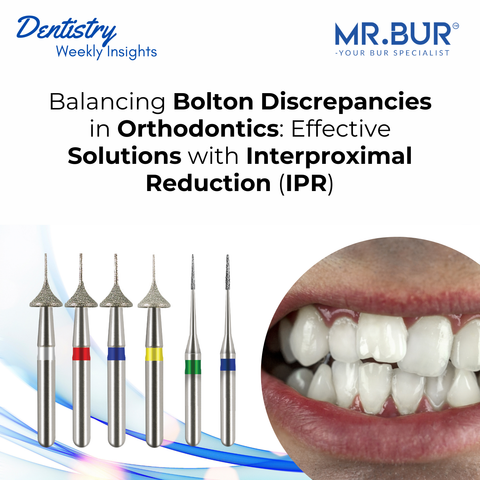Fluoride varnish has long been a staple in preventive dentistry, known for its ability to strengthen enamel, prevent decay, and reduce sensitivity. In orthodontic care, particularly during treatments that involve enamel reduction, such as Interproximal Reduction (IPR), fluoride varnish serves as an invaluable tool for protecting the teeth against potential risks. This article explores the benefits of fluoride varnish in orthodontics and highlights its role in preserving enamel integrity in patients undergoing IPR.
Understanding Fluoride Varnish: What It Is and How It Works
Fluoride varnish is a highly concentrated topical fluoride that is applied to the teeth, creating a protective barrier against acid attacks from bacteria. Its slow-release formula allows fluoride ions to penetrate the enamel, strengthening it and helping to repair microscopic demineralized areas. Unlike other fluoride treatments, fluoride varnish adheres to the enamel surface for several hours, allowing for prolonged fluoride absorption.
Why Use Fluoride Varnish in Orthodontics: Enhancing Protection During IPR Treatments
Fluoride varnish is a vital tool in orthodontic care, offering protective and strengthening benefits, particularly for patients undergoing Interproximal Reduction (IPR) or wearing braces and other orthodontic appliances. By applying fluoride varnish throughout orthodontic treatment, dental professionals can effectively prevent demineralization, reduce sensitivity, and support enamel strength, which contributes to improved patient outcomes. Here’s how fluoride varnish serves as an essential component of orthodontic treatment:
1. Preventing White Spot Lesions and Demineralization
Orthodontic appliances, such as brackets and wires, create surfaces where food particles and bacteria can accumulate, increasing the risk of white spot lesions and demineralization around these areas. Applying fluoride varnish helps counter this risk by enhancing enamel’s resistance to acid attacks, creating a barrier that protects against bacterial acids, and supporting mineral retention in the enamel. In patients who undergo IPR, fluoride varnish provides added protection to the newly exposed enamel surfaces, preventing early-stage demineralization and preserving enamel integrity.
2. Strengthening Enamel Post-IPR for Durability
The IPR process involves careful enamel removal between teeth to create alignment space. This procedure, though effective, leaves the treated surfaces more susceptible to acid erosion and wear. Applying fluoride varnish immediately post-IPR facilitates remineralization, strengthening the enamel by forming fluorapatite—a more acid-resistant form of enamel. This protective layer helps counteract the increased risk of demineralization, ensuring that patients maintain a stronger enamel structure during orthodontic treatment.
3. Reducing Sensitivity for Patient Comfort
Tooth sensitivity is a common concern after IPR, as removing a thin enamel layer can expose dentin tubules, leading to heightened sensitivity to external stimuli. Fluoride varnish effectively manages this sensitivity by sealing these dentin tubules, reducing discomfort and sensitivity. This sealing effect provides patients with relief from temperature or food sensitivities, allowing them to experience a more comfortable orthodontic journey, especially during the initial period following IPR.
4. Decreasing the Risk of Interproximal Decay
The spaces created by IPR can initially be challenging for patients to clean effectively, increasing the risk of interproximal decay if plaque or bacteria accumulate. Fluoride varnish acts as a protective barrier over these spaces, reducing decay risk as patients learn proper interdental cleaning techniques. This added layer of defense supports long-term dental health by making it easier to maintain the integrity of interproximal spaces, particularly during orthodontic treatment.
Is Fluoride Varnish Suitable for Everyone?
Fluoride varnish is widely recognized as a safe, effective preventive treatment for dental decay, and it’s suitable for a variety of patient groups. However, like any dental treatment, there are certain cases where its application may require extra consideration.
Who Might Not Be Ideal for Fluoride Varnish?
While fluoride varnish is safe for most people, some may have an allergy to ingredients like colophony, a common resin in varnishes. Patients with known allergies should inform their dentist, who can recommend alternative fluoride treatments, such as gels or foams.
Though rare, fluoride sensitivity can occur. For these individuals, high-concentration fluoride treatments may not be suitable, and alternatives with lower fluoride levels might be recommended.
Fluoride varnish is typically not recommended for infants younger than 6 months, as their enamel is still in the earliest developmental stages, and they generally face a lower risk of decay.
Best Practices for Applying Fluoride Varnish in Orthodontics
- Application After IPR: After IPR, carefully apply fluoride varnish to the treated enamel surfaces. The varnish should coat all exposed areas to ensure complete coverage.
- Patient Education: Inform patients about avoiding food and drink for a few hours after application to maximize fluoride absorption. Explain that the varnish may feel slightly sticky, but this sensation will fade.
- Regular Reapplication: For patients undergoing long-term orthodontic treatment, applying fluoride varnish every three to six months can provide ongoing enamel protection.
You May Also Like:
1. Types of Braces in Orthodontics and Tooth Preparation: Using IPR Burs for Optimal Outcomes
2. Understanding and Reducing Black Triangles in Dentistry: When to Use IPR
3. One Slice IPR Kit vs. Traditional Tools: Enhancing Interproximal Reduction
4. Step-by-step guide to Interproximal Bur Technique: The bur used for IPR
At MR. BUR US, our strict adherence to relevant regulations guarantees our commitment to quality and safety.
Diamond Burs, Carbide Burs, Surgical & Lab Use Burs, Endodontic burs, IPR Kit, Crown Cutting Kit, Gingivectomy Kit, Root Planning Kit, Composite Polishers, High Speed Burs, Low Speed Burs
Subscribe our newsletter now!



